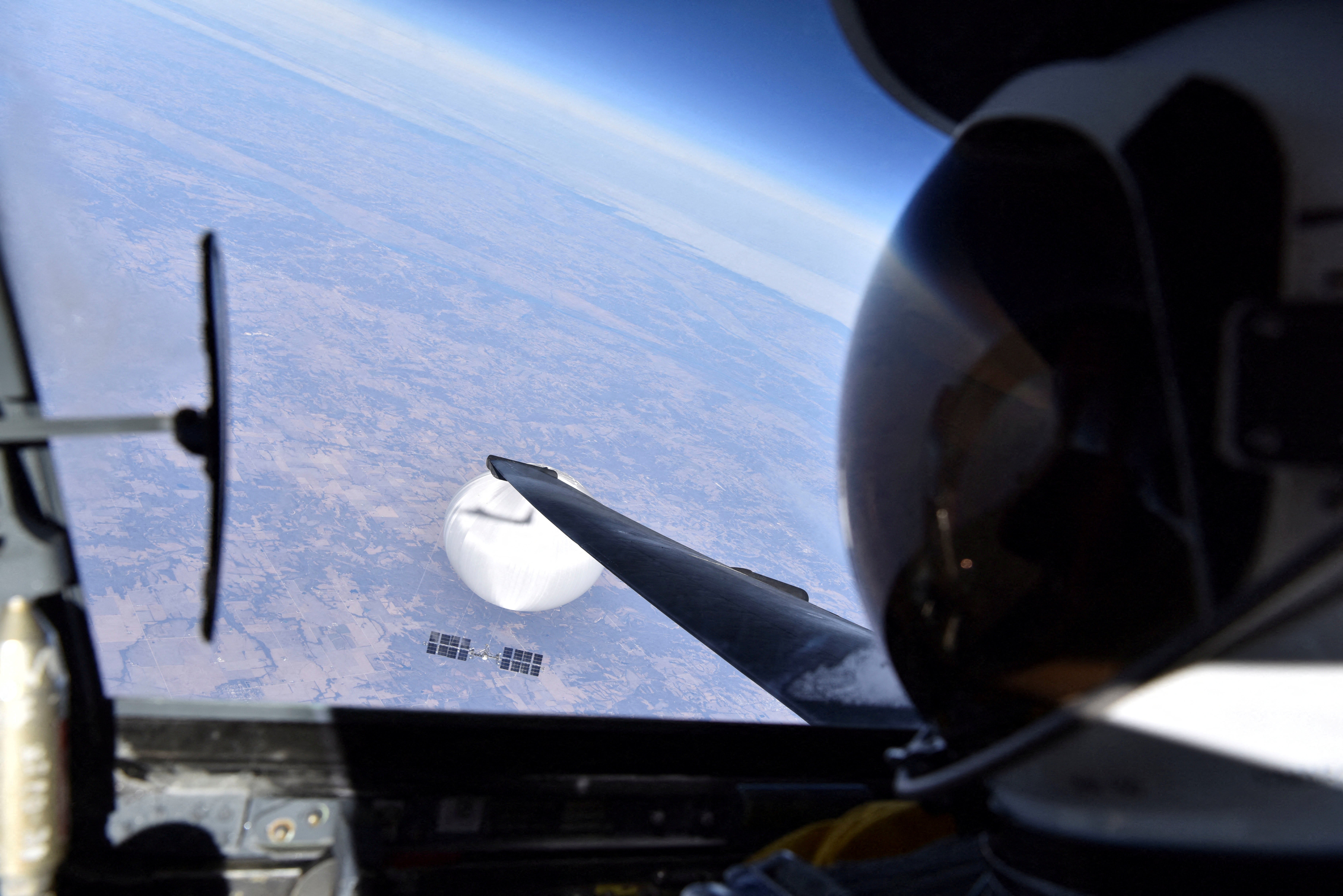Chinese spy balloon sent data about US military sites back to Beijing before Pentagon could stop it
US officials say the balloon’s capabilities weren’t any more sophisticated than China’s existing fleet of spy satellites

The Chinese spy balloon that passed through American airspace in February was able to transmit at least some of the images and data it collected back to China despite US efforts to stymie its’ intelligence-gathering mission.
According to NBC News, two current US officials and a former Biden administration official said the airship had enough manoeverability that China was able to direct it to make multiple passes over sensitive military sites.
During that time, the balloon reportedly collected and retransmitted electronic signals gathered over the sites.
The officials told NBC China’s efforts were hampered by the Biden administration’s decision to “move around potential targets and obscure the balloon’s ability to pick up their electronic signals by stopping them from broadcasting or emitting signals”.
In February, US officials said the balloon’s intelligence collection capabilities provided Beijing with “limited added value” compared with what Chinese intelligence services can already collect with China’s constellation of low earth orbit surveillance satellites.
The balloon was shot down by an F-22 Raptor off the coast of South Carolina on 4 February after it transited the continental United States. During its four-day journey across the US, it flew over Malmstrom Air Force Base in Montana and other sensitive sites in that region where the US has based nuclear weapons, including long-range strategic bombers and silos for Minuteman III ballistic missiles.
At the time, US officials said they advised President Joe Biden against shooting down the balloon over land because its’ size — equivalent to as many as three school busses — could result in a large amount of debris that would have posed a risk to civilians on the ground.
In a statement following the successful shutdown, Defense Secretary Lloyd Austin said Pentagon commanders “had determined downing the balloon while over land posed an undue risk to people across a wide area due to the size and altitude of the balloon and its surveillance payload”.
Join our commenting forum
Join thought-provoking conversations, follow other Independent readers and see their replies
Comments